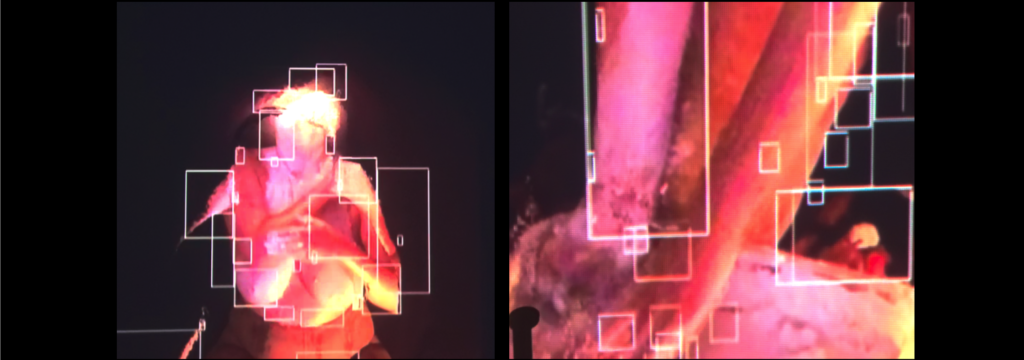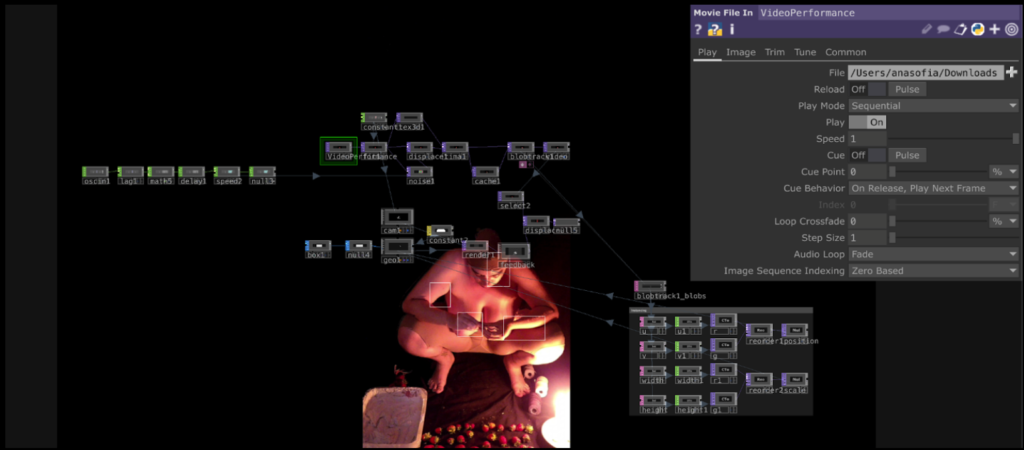
aracnídea investigates an inside out space, where the participants watch a performance from the inside – the performers’ data build the space, but they are not physically there. The installation contains a pre recorded video and audio of a performer. She is present, but the only live element from her is the data of her emotions. She wears a GSR sensor and the information is sent via OSC to TouchDesigner in the installation space, deforming her body on the video. In other words: her emotions distort the installation visuals.
HARDWARES & SOFTWARES
TouchDesigner, Arduino, GSR sensor, Laser Projectors, holographic screens.
SUPPORT
Supported and power by Goldsmiths University of London.



ABOUT
The video material was created in a workshop of performance art practices in Latin America with examples of popular rituals that I have been giving for women in the past four years. At the end of each round, the group creates their own individual ritual, a plastic-autopsy of embodied emotions related to their experience of womanhood in LatAm. After long and intimate rituals together, a farewell one is made by giving her body away to her obsessive embodied emotion, by erasing her identity with materiality that is culturally, politically and socially relevant to the performer. On the installation, this ritual is distorted by the live data of the performer’s emotion by distance, and the connection is created through OSC – a modern version of native rituals, having tech as a tool for resistance.

Registers of previous rituals that could be added to the space. In this project, only the one on the left is included in the installation. See more below.
The TouchDesigner code was inspired by a tutorial Blob Tracking Instancing by PPPANIK on YouTube. Instead of an audio reactive patch, I connected it to a GSR sensor through a Raspberry Pi Pico W board, getting the data from the body and sending via OSC to TD. The decision for this patch included many reasons. Initially, it was an aesthetic choice, in the sense of distorting the image based on an analog input, but allowing the initial video input to be recognizable somehow. Then, while altering the patch, the decisions were guided by the desire to make the person lose their identity, an additional step on top of the process with the materiality itself. Finally, it was important for the person to be tagged somehow, and use the patch as a tool for critically reducing the persona into data: each movement is tracked and signalised with a squared box.

Arduino code (left) and Raspberry Pi Pico W connected to GSR sensor (right).
Conception, direction, coding, movement dramaturgy: Ana Sofia Calixto
Performer: Leila de Noce
Production (Brazil): Amanda Marques and Lara Florence
Photography: Lara Florence